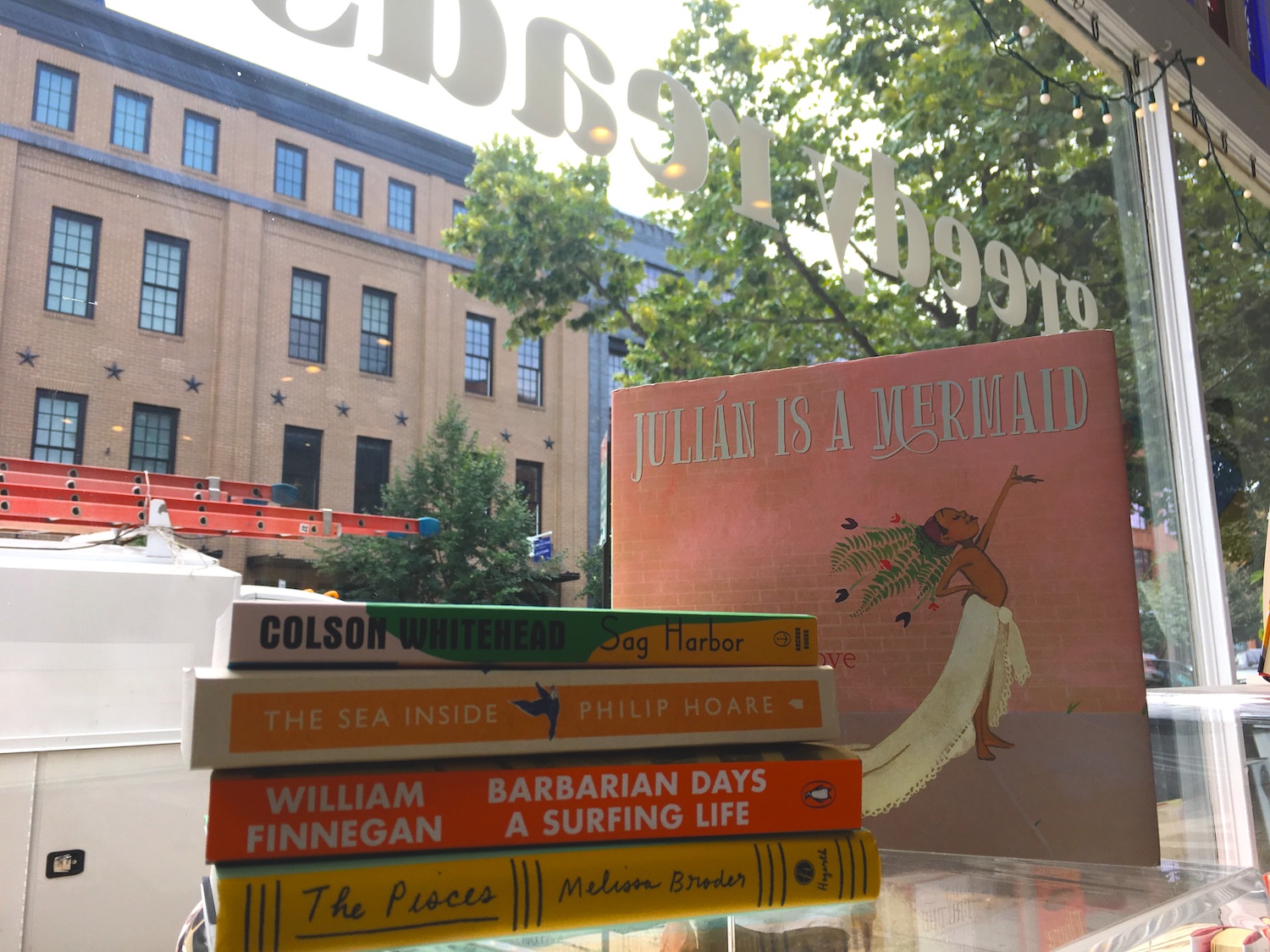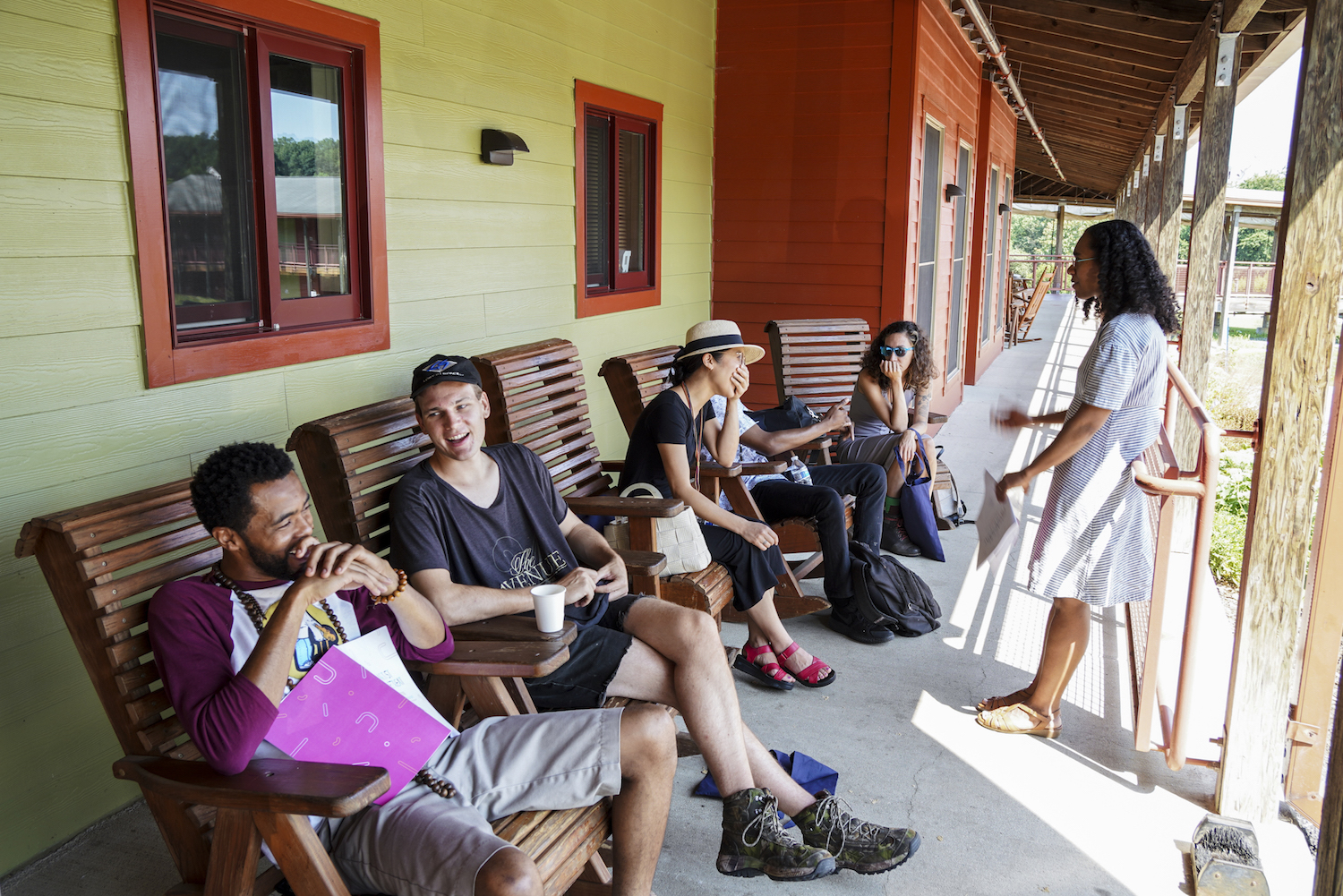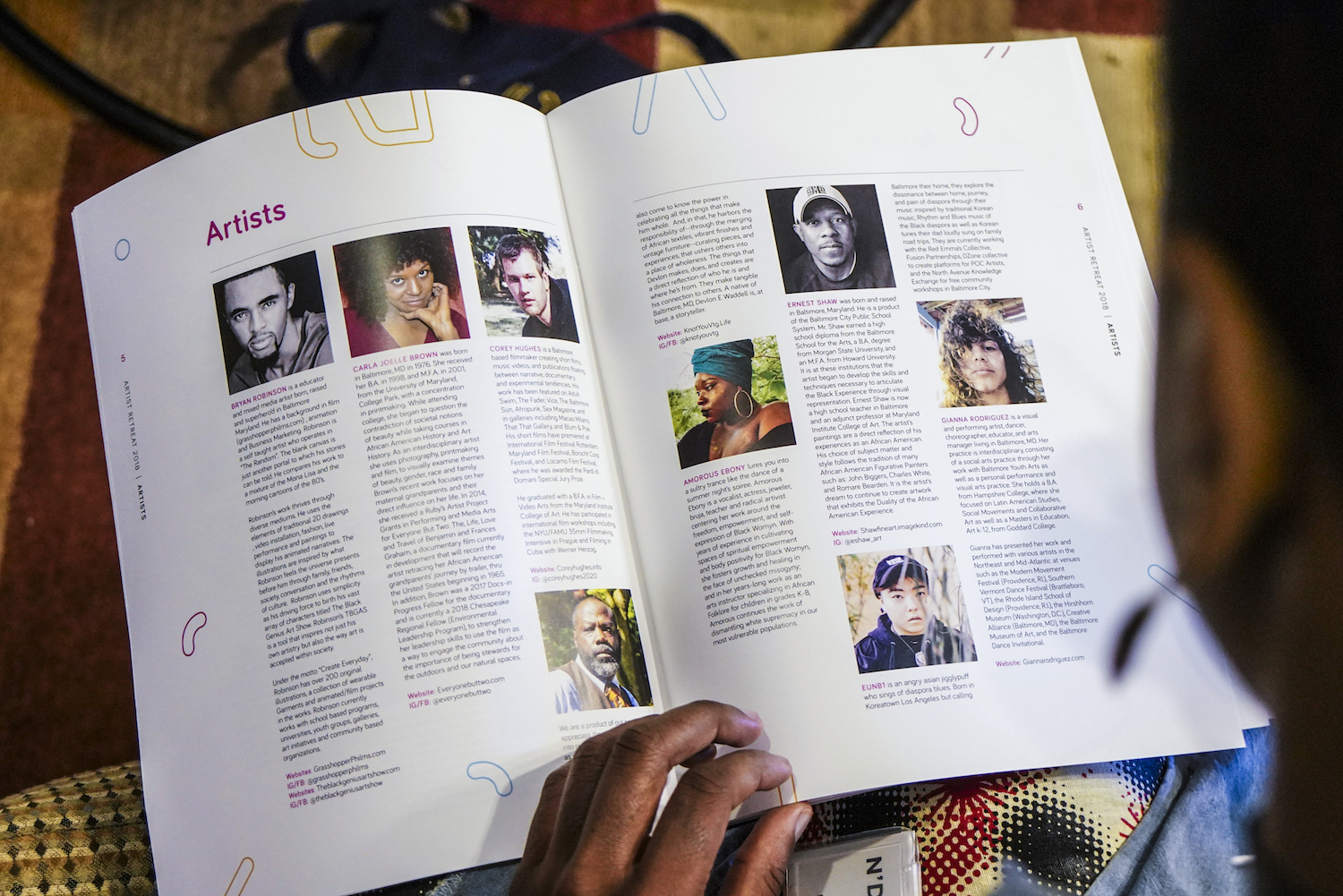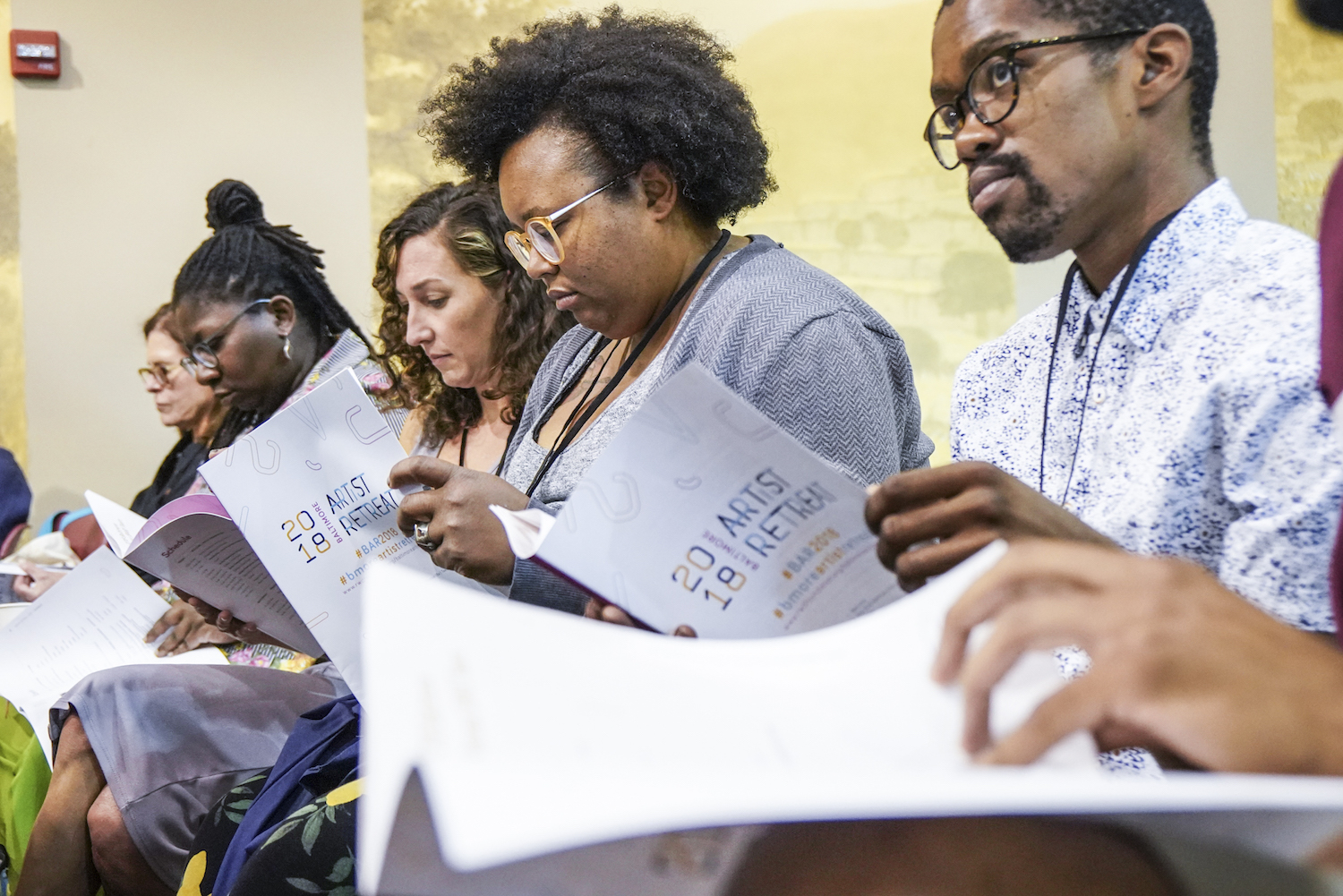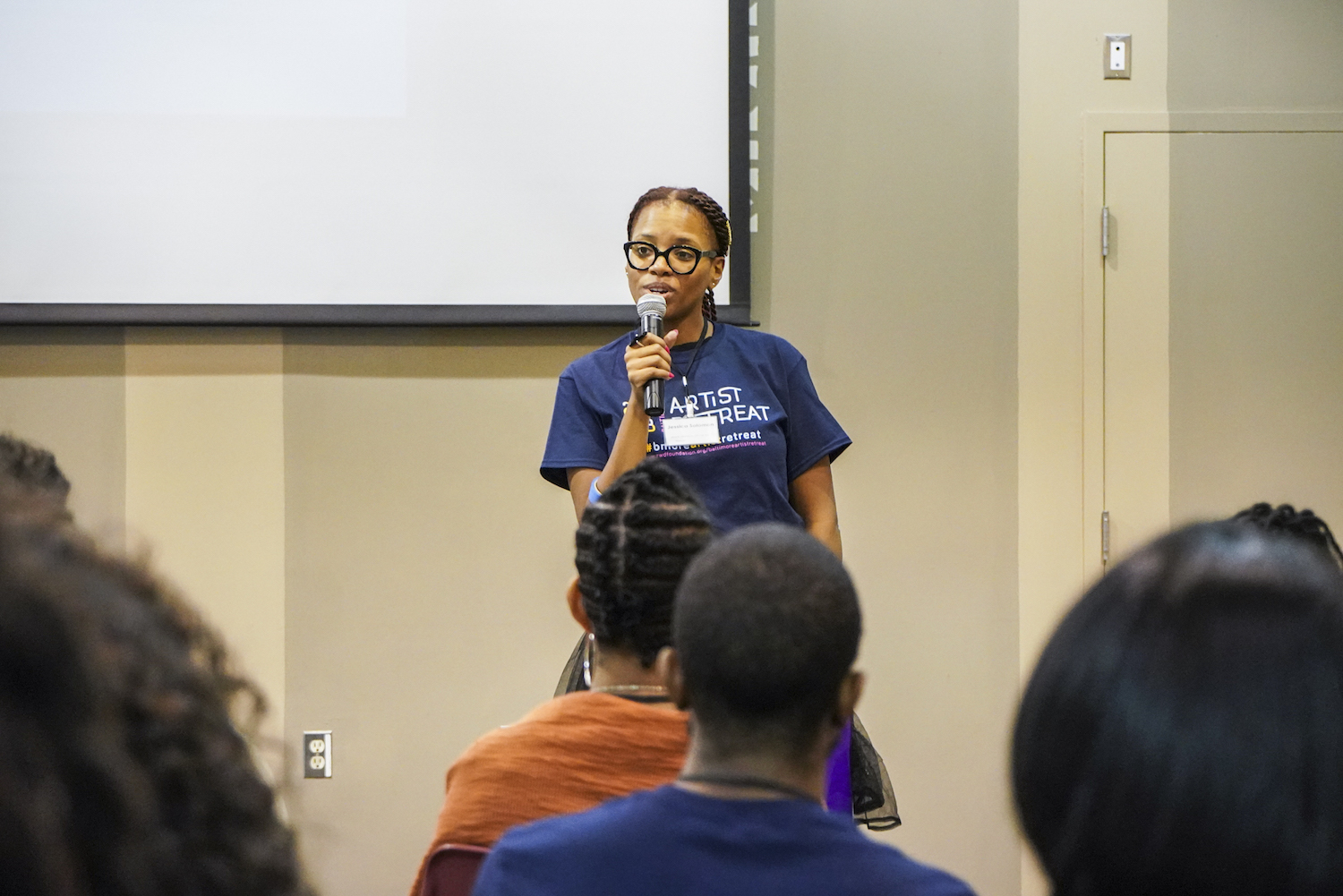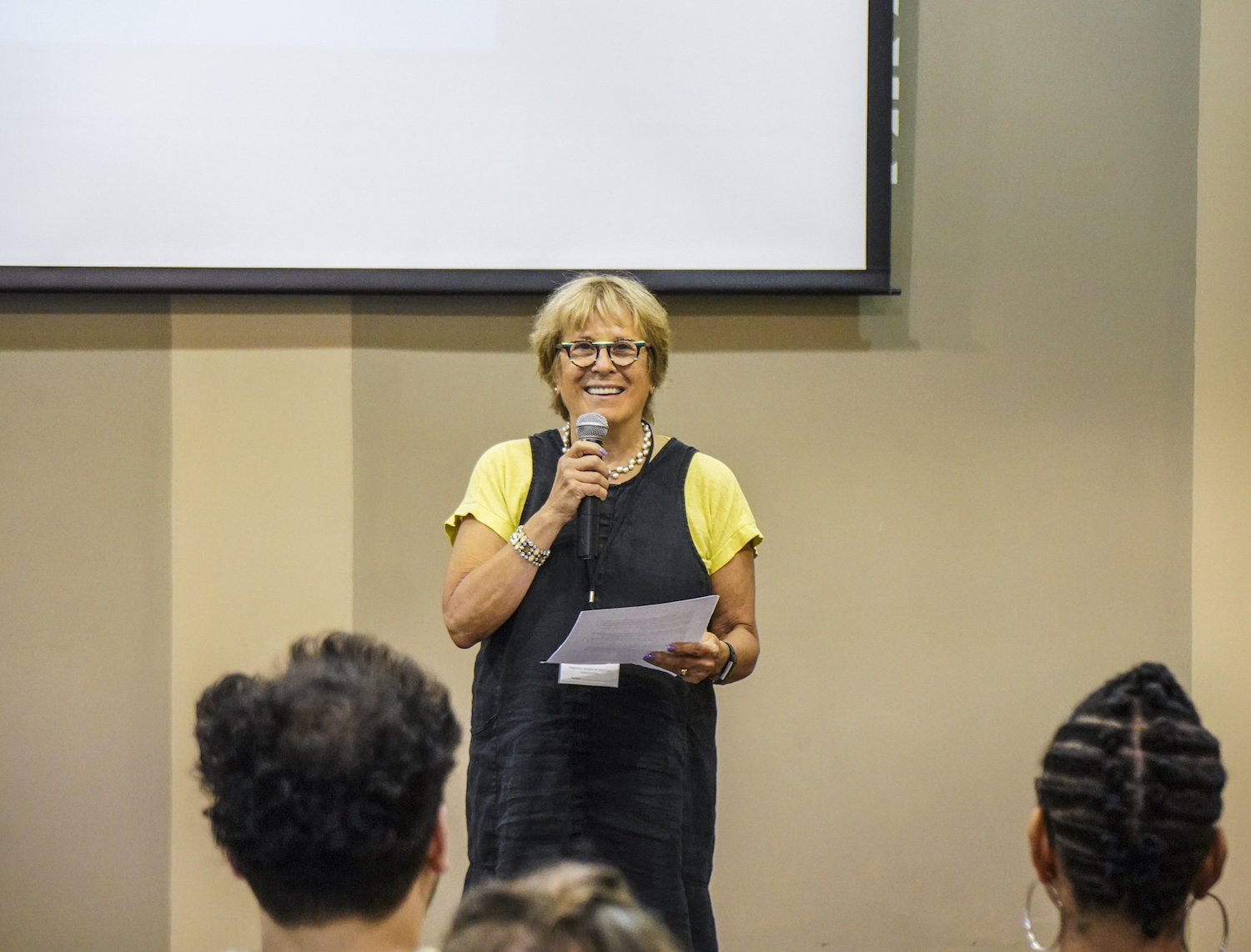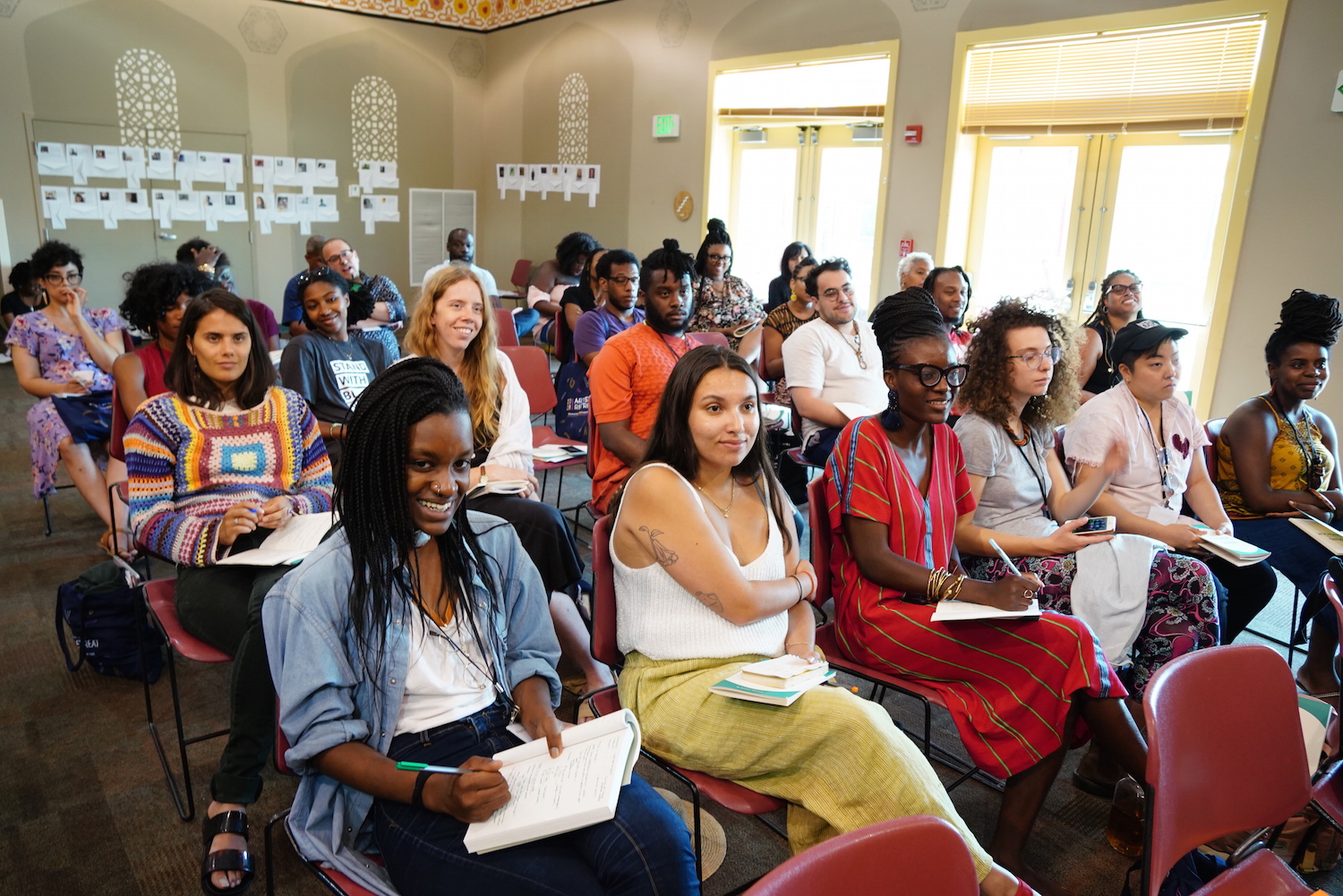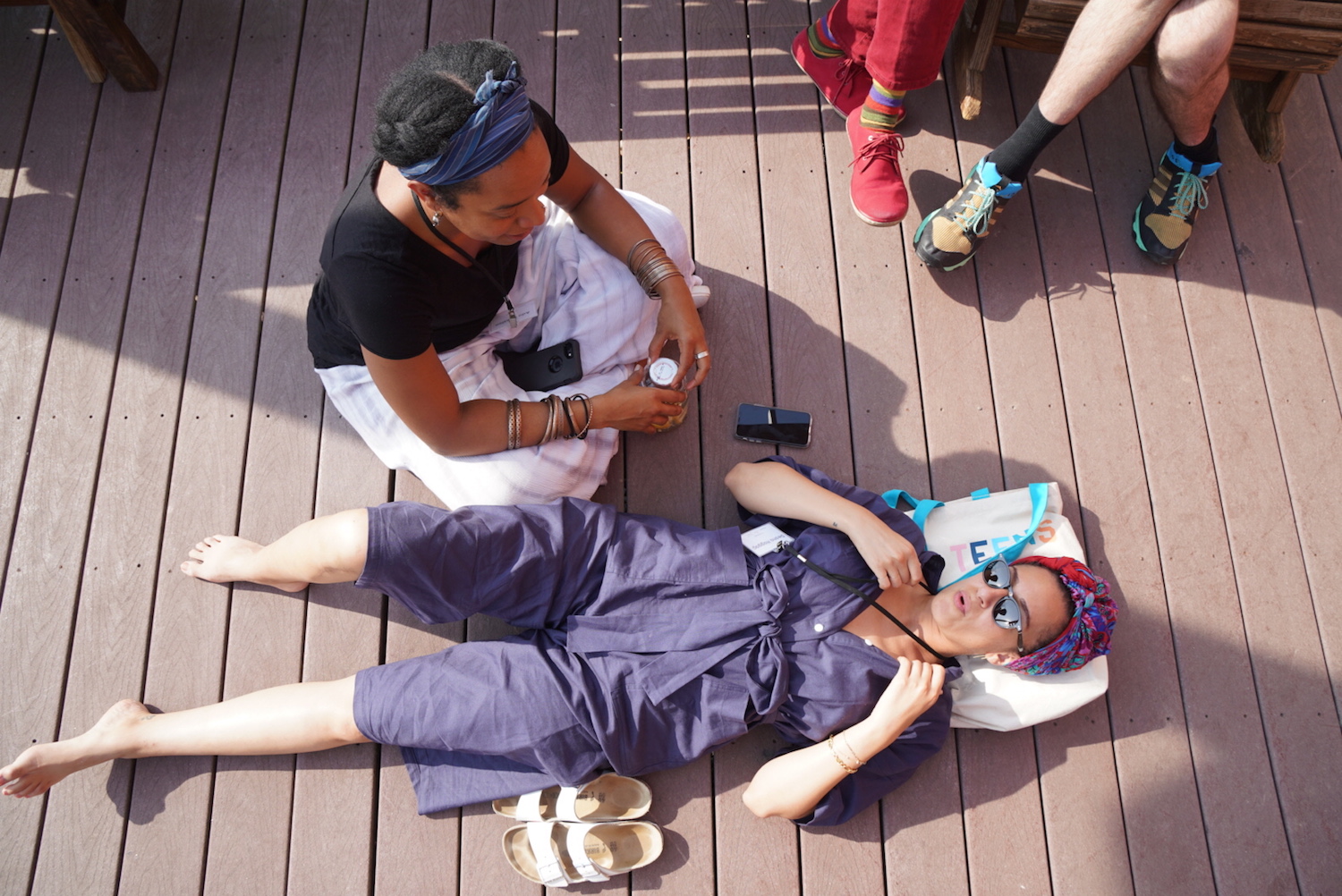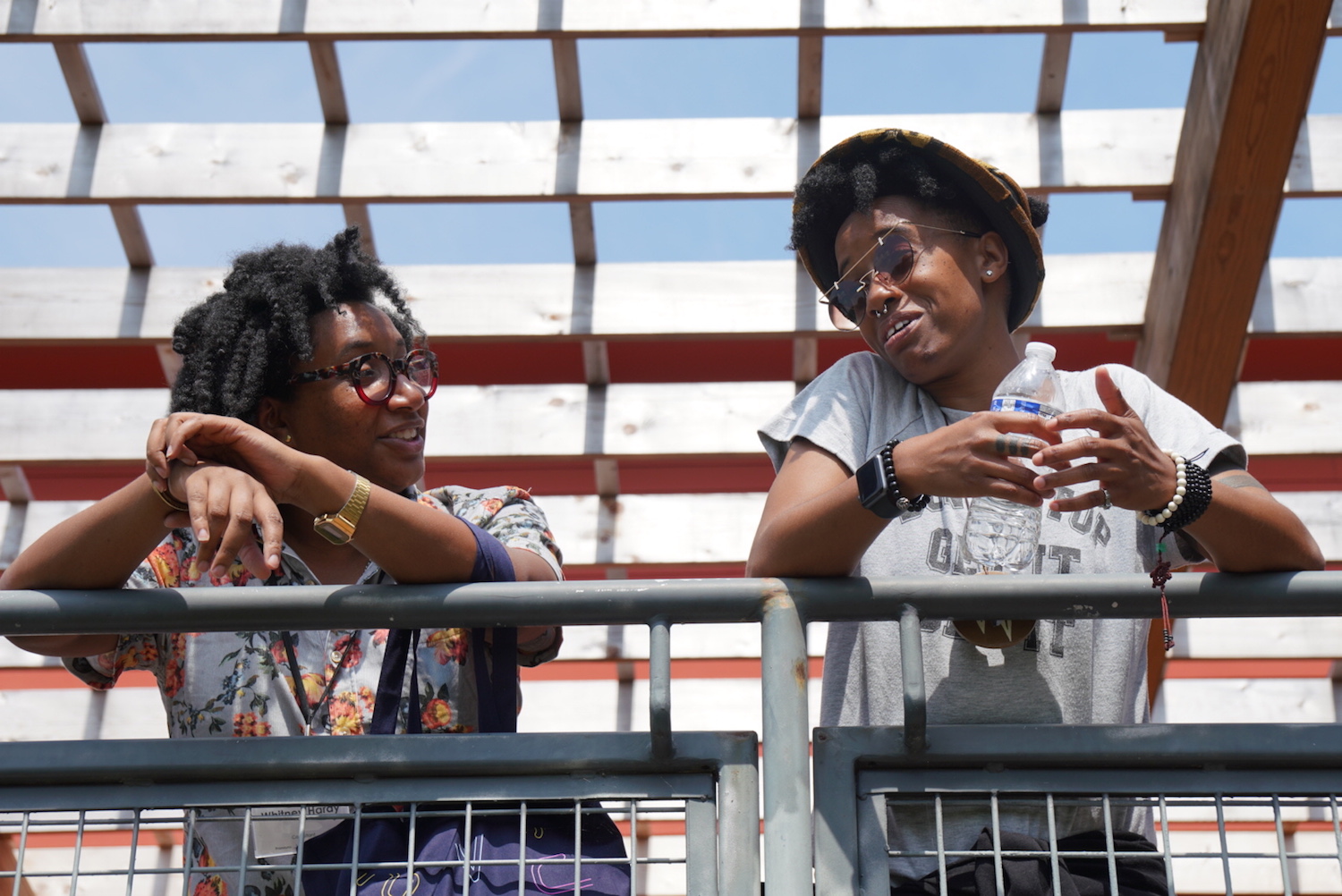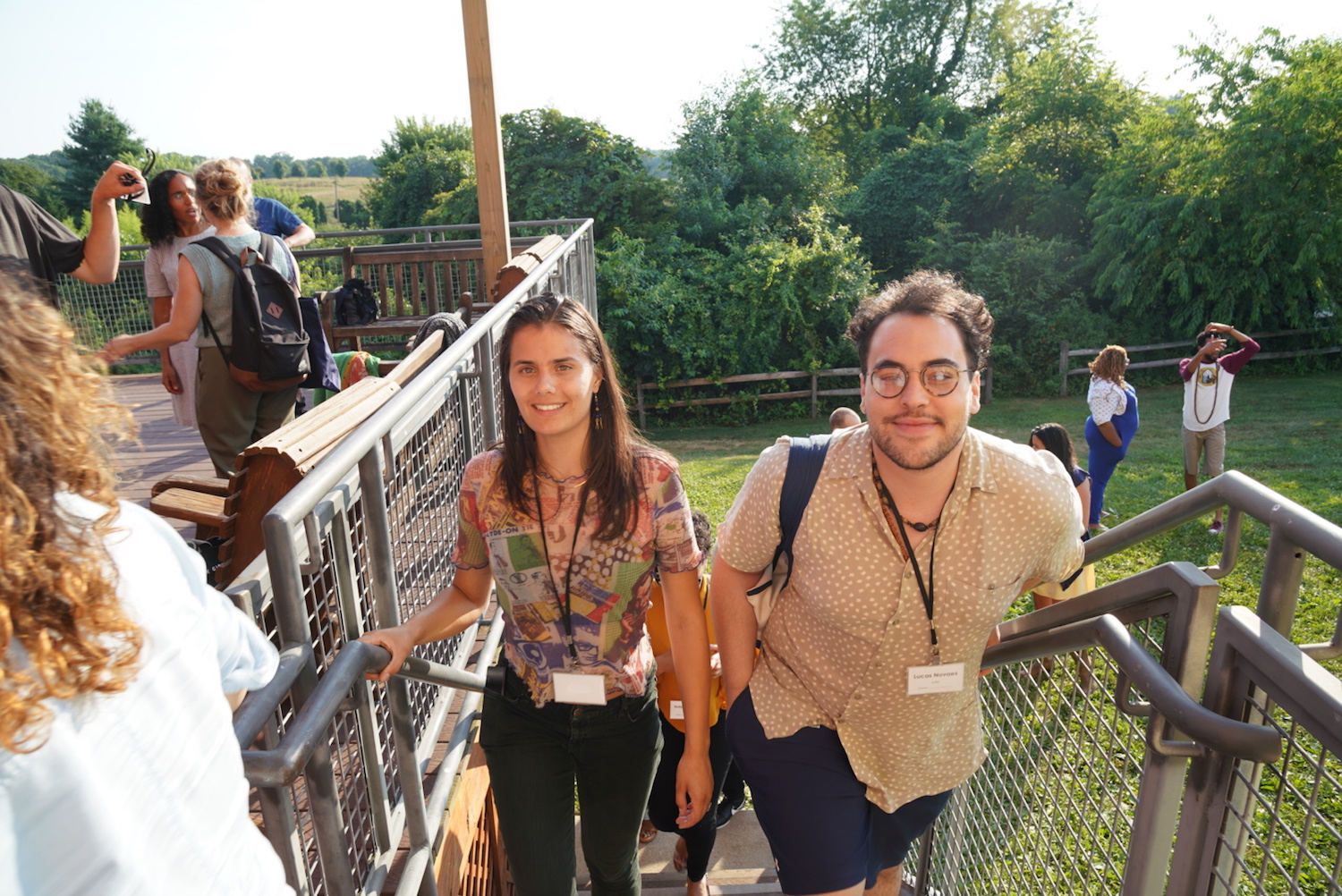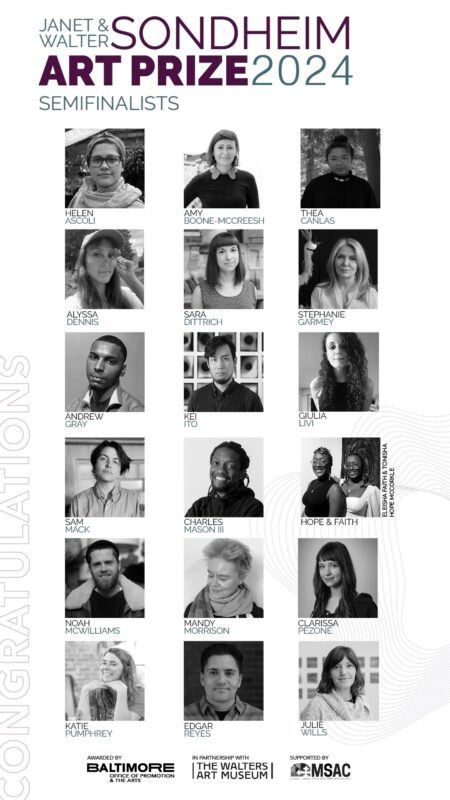Takeaways from the 2018 Baltimore Artist Retreat from Participating Artists and Consultants by Cara Ober
My first summer camp experience was magical and transformative. It was an art camp organized for sixth graders and for me, it yielded a head of unevenly pink hennaed hair and new obsessions with darkroom photography and the Violent Femmes.
It was a great privilege to attend summer art camp, an opportunity that most artsy kids never had. For adult artists, this opportunity is even less common, which makes the Baltimore Artist Retreat, hosted this past July at the bucolic Pearlstone Center on the edge of Baltimore County, even more special.

The Artist Retreat was first produced by The Contemporary in 2016, presenting an opportunity for the Baltimore arts community to engage in professional development, community building, and networking, and connected Baltimore based artists to professionals in their field from across the country.
This year the Baltimore Artist Retreat (BAR2018) was organized and produced by the Robert W. Deutsch Foundation with support from the T. Rowe Price Foundation, with the goal of deepening networks, opportunities, and practices for Baltimore artists. The organizers of this year’s retreat each participated in the 2016 event; Jessica Solomon as a consultant, Khadija Adell as an artist, and Deutsch Foundation president Jane Brown as a funding partner.
BAR2018 featured topical workshops, panel discussions, seminars, and presentations by participating artists. The retreat was free for 40 selected artists from the Baltimore region and included transportation to and from the center, lodging, and meals.
“I applied to the retreat with the hope of forming deeper bonds within the creative communities of Baltimore, perhaps making new friends and finding younger artists to whom I could offer support,” said figurative painter Mequitta Ahuja, a 2018 Guggenheim Fellowship award winner, a week after attending the 2018 Baltimore Artist Retreat. “For me, the best part of the retreat was the intergenerational mix of participants, and not just age diversity but also people at different stages in their careers. I have often not felt a strong sense of belonging in Baltimore, but I felt very encouraged and supported at the retreat. I’ve taken that feeling back with me into the studio.”
Consultant and workshop presenter Andrew Simonet, a novelist, choreographer, and founder of Artists U also found the diversity of the retreat participants made community conversations rich and deep. “Convening artists is profound, especially when you mix disciplines, ages, career points, and cultural backgrounds. Strange how rarely it happens. Prioritizing balance and well being is radical and necessary, especially in the arts.”
Once the application launched in April, an overwhelming response from local artists working in literary, visual, performing, and sound arts was received. Artists residing in Baltimore City and County submitted applications based on their interest in expanding their artistic networks, need to access professional development resources, desire to share their practice with a broader audience, and a demonstrated commitment to Baltimore’s arts community. A jury of Baltimore-based artists from multiple disciplines, each of whom had attended the 2016 retreat, selected the BAR2018 cohort.
“I had attended the 2016 retreat and thought it was a great experience,” said Ursula Populoh, a fiber and performance artist. “I submitted my application for the Baltimore Artist Retreat 2018 and hoped very much I would be accepted. I was overjoyed when I received the acceptance email.”
“Applying for this retreat was the beginning of me recommitting myself to nurturing my artistry,” says writer Bilphena Yahwon. “Right before I submitted my application, I made a promise to myself that if I got selected, I would make the necessary changes to ensure I prioritized this writing thing.”

The intensive weekend began on Friday morning with 6-minute presentations by each artist using sides, video, audio and performance to present their practice. These presentations formed the core of the weekend experience and laid the groundwork for artists and consultants to know more about each other and helped create an environment where new connections and collaborations could be imagined.
“After everyone presented on Friday, there was a different connection between all attendees and the conversations that followed reflected that,” says Whitney Hardy, a BAR2018 consultant and Founder of Young Arts Patrons in Memphis, TN. “Those conversations across disciplines is what is changing the way the arts community exists in society. We need to get Baltimore artists to Memphis and Memphis artists to Baltimore. The two cities have so much genius to share with each other.”
The first day ended in celebration with a happy hour and shared meal, followed by a campfire where artists and consultants shared stories and made s’mores.
Saturday was dedicated to professional development workshops and one-on-one tailored coaching sessions for each artist by a designated consultant. The workshops, plenary sessions, and consulting pairs were informed by data collected in the application process.
Sessions entitled “Strategic Planning: Building a Balanced Sustainable Life,” and “Long-Term Financial Thinking for Artists: Rates, Revenue, and Capital” led by Artists U’s Andrew Simonet were attended by all participants.

Artists were able to build out the rest of their professional development schedule with a variety of consultant-led workshops such as:
- “Awards, Residencies, + Fellowships,” a conversation featuring awardees Wendel Patrick, Elissa Blount Moorhead, Paul Rucker, and administrators George Scheer (Elsewhere) and Deana Haggag (President + CEO of United States Artist), moderated by artist and educator Joyce Yu-Jean Lee
- “Cultural Organizing & Building Creative Community,” a conversation with Glory Edim (Well Read Black Girl), Kimi Hanauer (Press Press), Carla Du Pree (CityLit Project), George Ciscle (Baltimore Clayworks, MICA Curatorial Practice, and Founder of The Contemporary) moderated by artist and educator Dave Eassa
- “Legal Advice for Artists” (led by Adam Holofcener, ED of MDVLA)
- “Artists’ & The Marketplace” (led by arts consultant and collector Schwanda Rountree, Young Arts Patrons founder Whitney Hardy, and founder of The Agora Culture and Art on the Vine, Jessica Stafford Davis)
- “Artist’s as Parents” facilitated by Artists U
“The panel discussions, break out sessions, and one-to-one mentoring conversations were excellent,” said Angela N Carroll, an artist-archivist, who writes about contemporary Black visual and performance artists for print and online publications, including BmoreArt. “Everything was curated to address the needs and aspirations of each participating artist. The Deutsch Foundation team worked really hard to make sure that the event would provide resources to help artists further their careers.”
“When I was invited to be a retreat consultant, I welcomed the opportunity to provide my insight as both a collector and art advisor,” said DC-based lawyer Schwanda Roundtree. “After spending leisure time in Baltimore over the years visiting my good friends Amy Sherald and Andrea Pippins (now based in Stockholm) I really became intrigued with the artist community in Baltimore. My goal was to connect with the artists during the retreat and provide opportunities for growth in their artistic practice. I really got a true sense of the soul of the artist community in Baltimore.”
BAR2018 also interrogated the role of wellness and holistic health with the creation of the “Studio for Wellness, Arts and Contemplation” (SWAC)–a pop-up space where artists could rest, meditate, engage in movement based practices, receive a reiki energy session, make chakra related essential oils, and unwind and reflect on their bodies, minds, and spirits during this intensive weekend.
The entwined themes of health and sustainability were repeated throughout the retreat in a number of different ways. Consultant Andrew Simonet says, “The best part for me was that artists came together to talk about the work and how to sustain it. It’s so crucial for artists to build these conversations on our own terms, not in terms of the institutions and power structures of the art world. We can then meet the institutions as partners, not a saviors or arbiters of our success.”
Many participants cited energy and enthusiasm as primary takeaways from BAR2018. According to Bonnie Jones, sound artist, poet, and educator, “It was amazing that the organizers nurtured a truly radical energy among the participants – and that we were able to receive that and allow it to alter and transform the possibilities for honest and real conversations, deeper connections, and meaningful affirmations of our practices.”
Looking forward, the lasting impact of BAR2018 will be realized and measured over coming weeks and years. But one basic takeaway is the transformative power of deep human connection to renew value and purpose in the individual practices of artists.
“I feel more passionate about being an artist than ever before,” said artist and healer Nicoletta Darita de la Brown. “I feel seen, heard, loved and even more surrounded by the beautiful arts community that I am a member of.”
Artist Bonnie Crawford agrees. “The retreat provided me with time to pause and reflect on my work and what I would like to do next in my practice. More than anything else, it helped me to refocus my energy in healthy ways–reigning in my workaholism, giving me tools to conserve my energy, and providing a support network I can lean on. I even bought a fancy blender when I got home because the food they served at the Pearlstone Center was so healthy!”
Adam Holofcener, Executive Director of Maryland Volunteer Lawyers for the Arts, recommends that the retreat be repeated every two years. “Artists from Baltimore who have not attended need to experience a retreat,” he says. “It is as constructive as it is therapeutic. Artists doing the work in Baltimore deserve this retreat and desperately need it. All of the creative communities in Baltimore are interesting, vulnerable, and committed. At the retreat, those qualities are allowed to flourish, unencumbered. Experiencing so many people, in one place, whose vectors are all pointed in the same direction, is an experience I wish for everybody.”

Author’s Note: The Robert W. Deutsch Foundation is a significant funder of BmoreArt.
For more information about BAR, click here.

